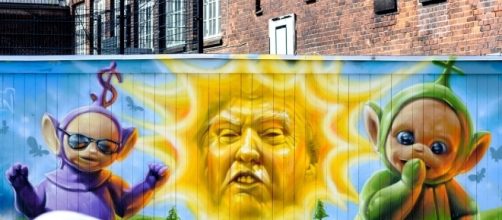Damien Karen, a New York videographer and photographer, used to only photograph portraits of models. These days, he can be found filming and photographing the countless protests happening around New York City — even if that means risking being arrested.
In the current polarized political administration, Karen is just one of the many artists who is taking it upon himself to create politically- and socially-engaged art.
“Creating political art is important because it helps inspire change…I want the people who succeed us to continue to take action so that change will continue to exist and unify people,” said Karen.
Have artists always used politics as inspiration for their work?
Political art is nothing new. Throughout history, artists have used their art to directly address and reflect the cultural narrative affecting them at that time. Examples of political art can be seen in the anti-nationalist Dada movement of 1915 or in the political messages illustrated in the Mexican Muralist movement of the 1920’s.
In today’s society, being under a president with a historically-low approval rating, it comes as no surprise that we are seeing an increased discussion surrounding the topic of political art.
“It’s incredibly complicated to actually measure the market of political art, but major museum exhibitions are the best indicator of what kind of discussions are going on in the art world,” said Barbara Escobar of The Art Dealers Association of America, a nonprofit organization that works with the nation’s leading galleries in the fine arts.
Nine out of the top ten museums in the United States have current or upcoming exhibitions featuring the topic of political art. This is different from 10 years ago, where none of the same museums were featuring any exhibitions with political art topics.
Despite the rising popularity of political art, many artists still have to work side jobs in order to fund their artistic endeavors.
Smaller artists who are unable to display their work in major art museums, such as Karen, often struggle to actually sell their art.
Noah Fischer, a NY artist whose work was on display at the 2017 Whitney Biennial, addresses concerns of economic and social inequity within art institutions. Fischer’s installation at the Whitney, titled “Debtfair,” features multi-medium works by thirty selected debt-laden artists.
The incorporated works are for sale and are able to be purchased at the price of the artists’ monthly loan payments. Through sculptures, illustrations, and performance art, Fischer aims to advocate for under-appreciated artists.
“We are seeing a rise in political art because we are now cresting on a wave of social and political tension where artists are trying to uphold values of justice and equality,” said Fischer.
Trump in the spotlight
The election of Trump has led multiple artists to reconsider how to directly address political and social issues in creative ways.
“Trump’s rhetoric and appeal has made me question the society I live in and my role in it,” said Amanda Hodes, 20, a Washington D.C musician and poet.
“Now, I’m trying to grapple with my understanding of this political sphere through art. I think art is the best medium for trying to influence people to take action in a positive manner.”
Although the rise of discussion surrounding political art seems to be trending upwards, some artists aren’t incorporating Politics into their art at all. Taylor Hoekstra, a student studying art and fashion at Parsons School of Design, doesn’t agree with inserting political messages in art.
“Political art can be almost so left sided or right sided that it makes it unrelatable if I don’t agree with the issue being presented,” said Hoekstra. “I think art should be something beautiful and timeless and not so politically personal so that I can make it more personal to me.”
Whether or not art resonates with an individual’s personal politics, the message and purpose of why these artists are creating political art remains the same: for art to serve as an alternative context for conversation on divisive issues.
“In such a political crisis, people are looking to art to understand just how to get out of this mess,” said Fischer. “While art may not have all the answers, it certainly is a large part of the equation.”


